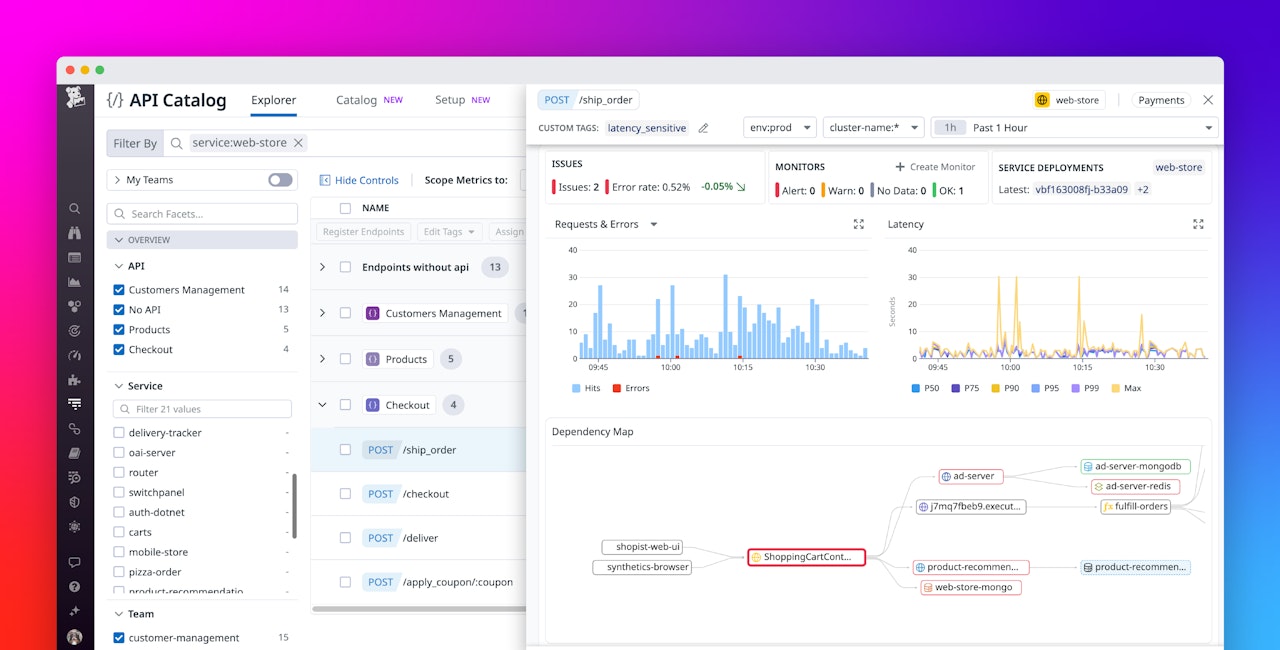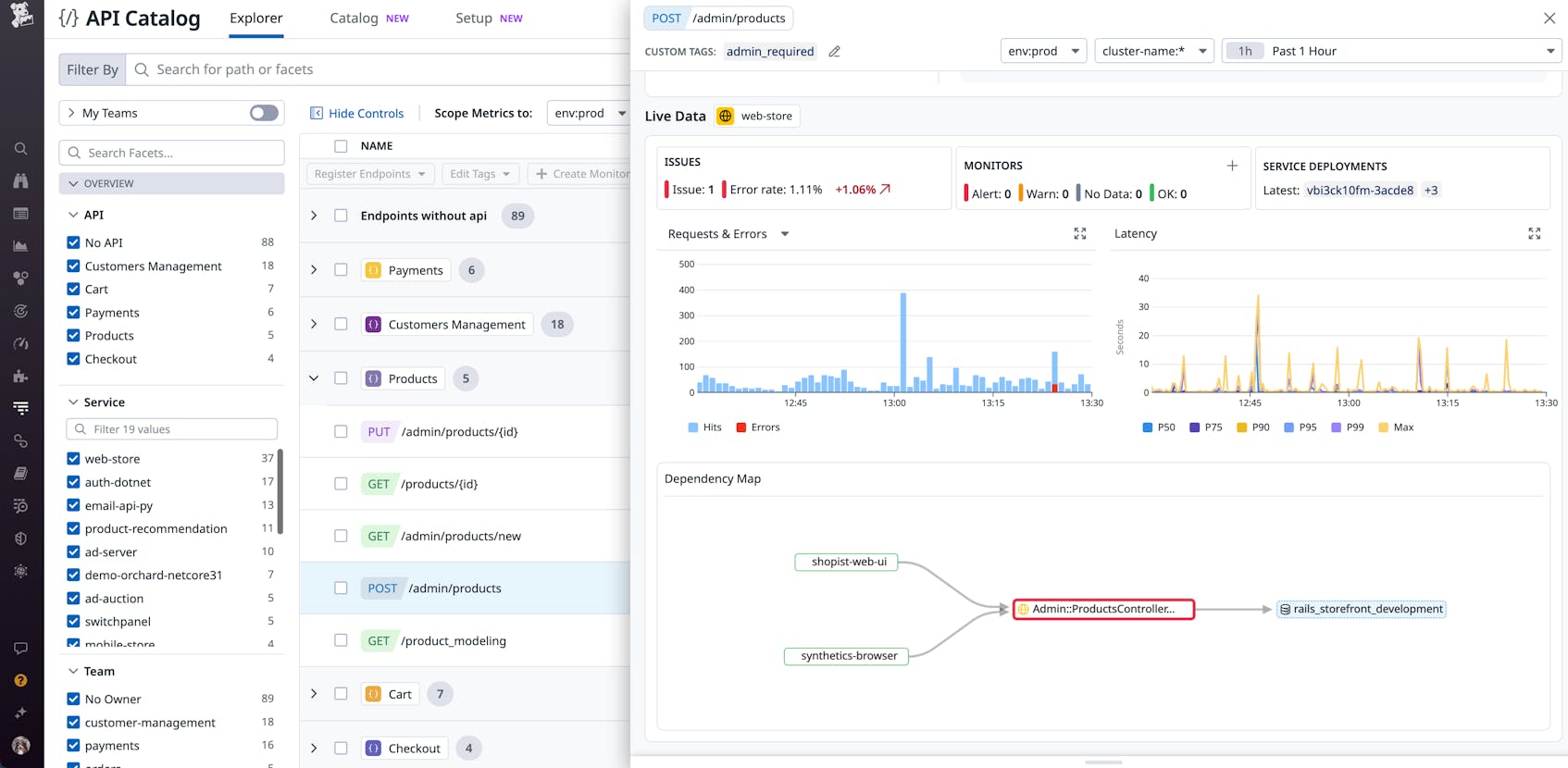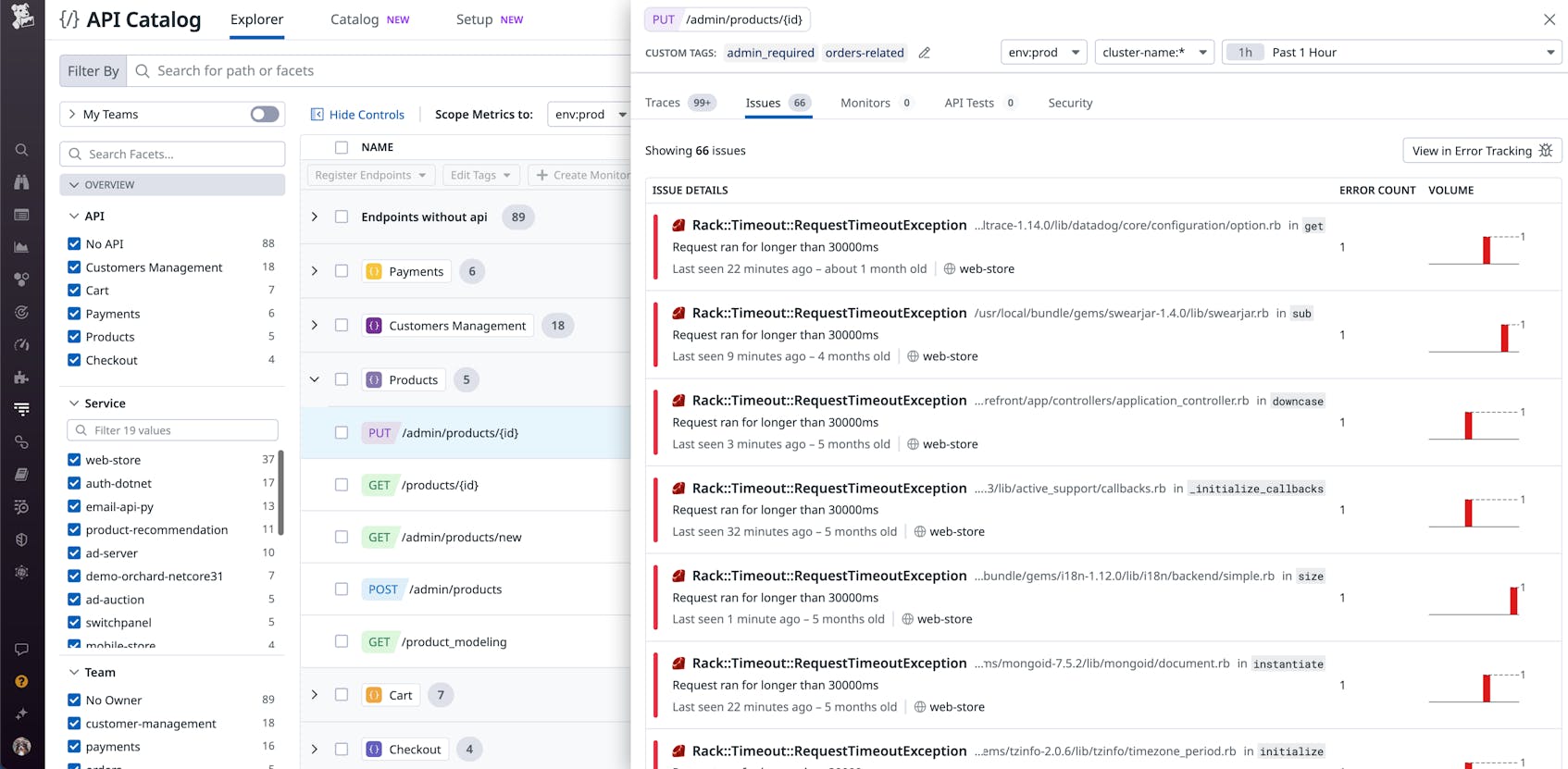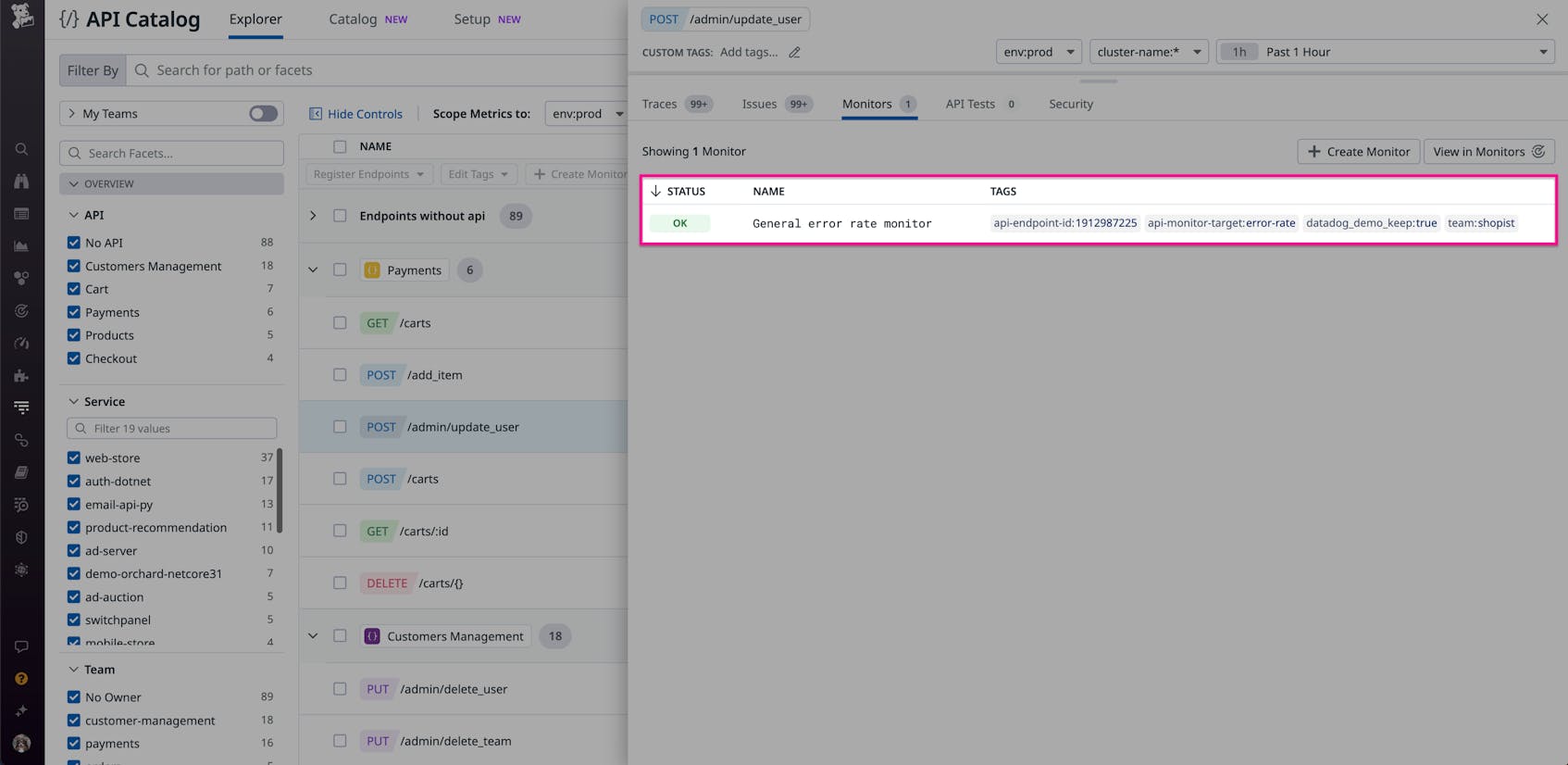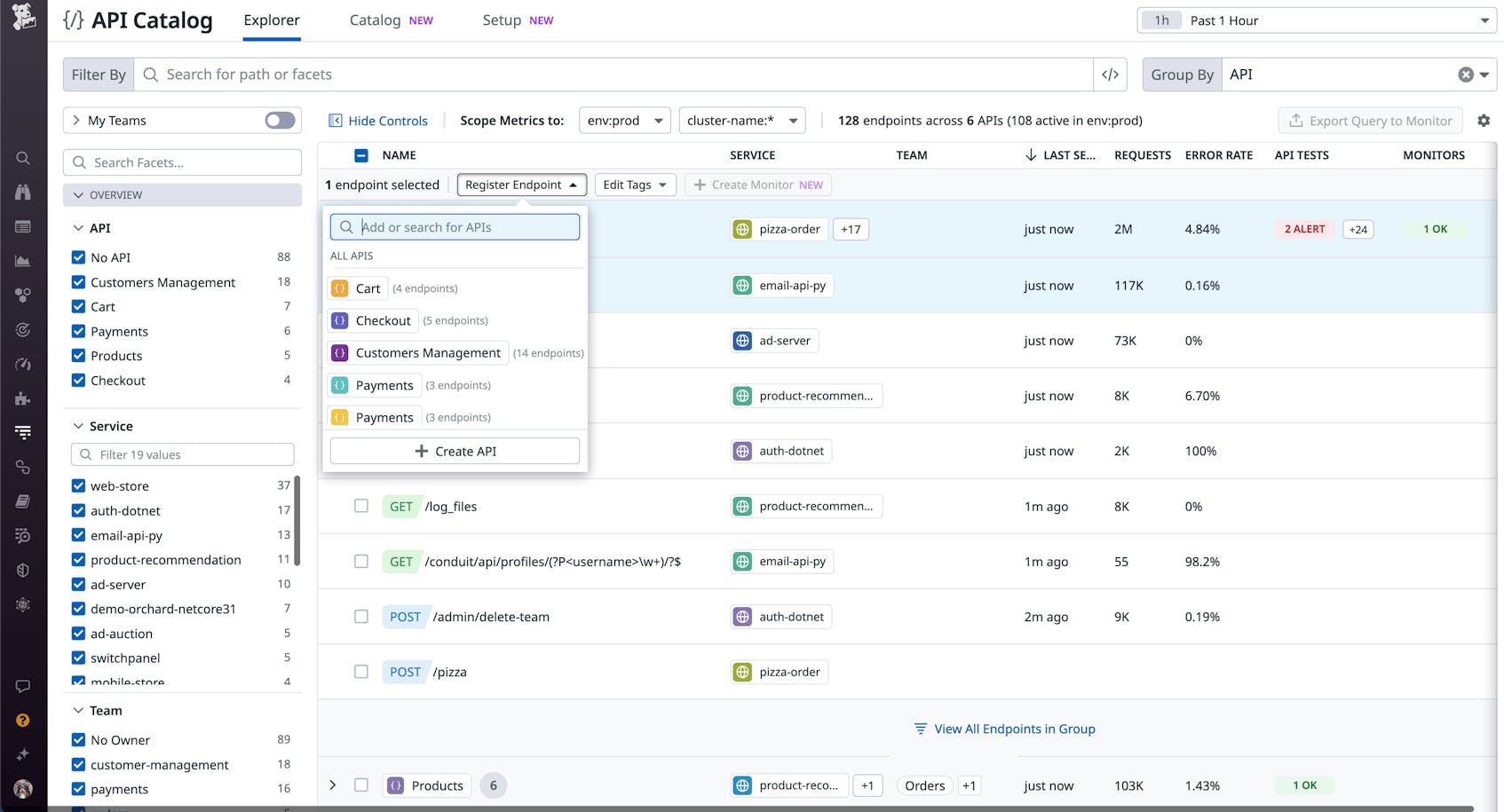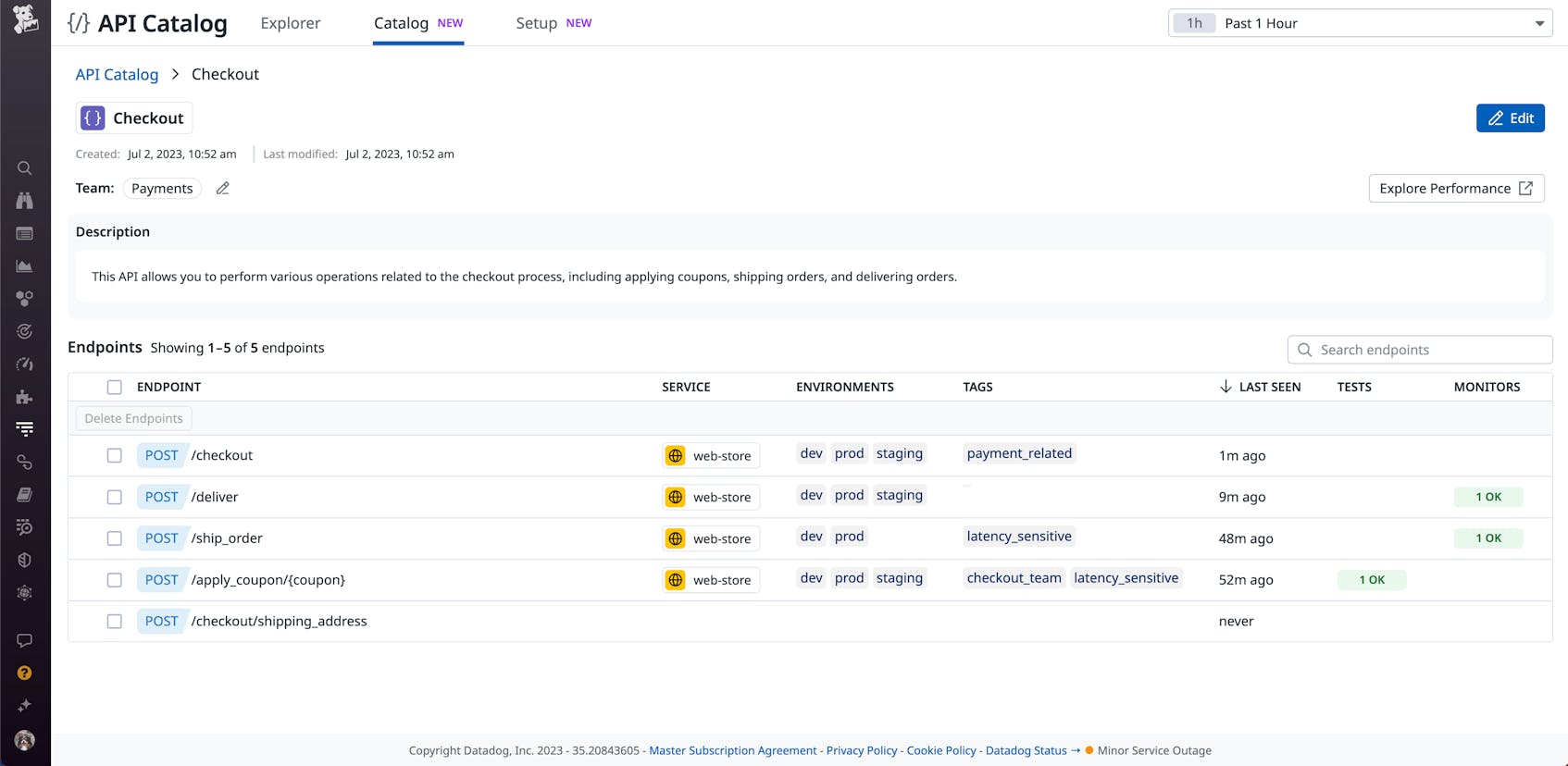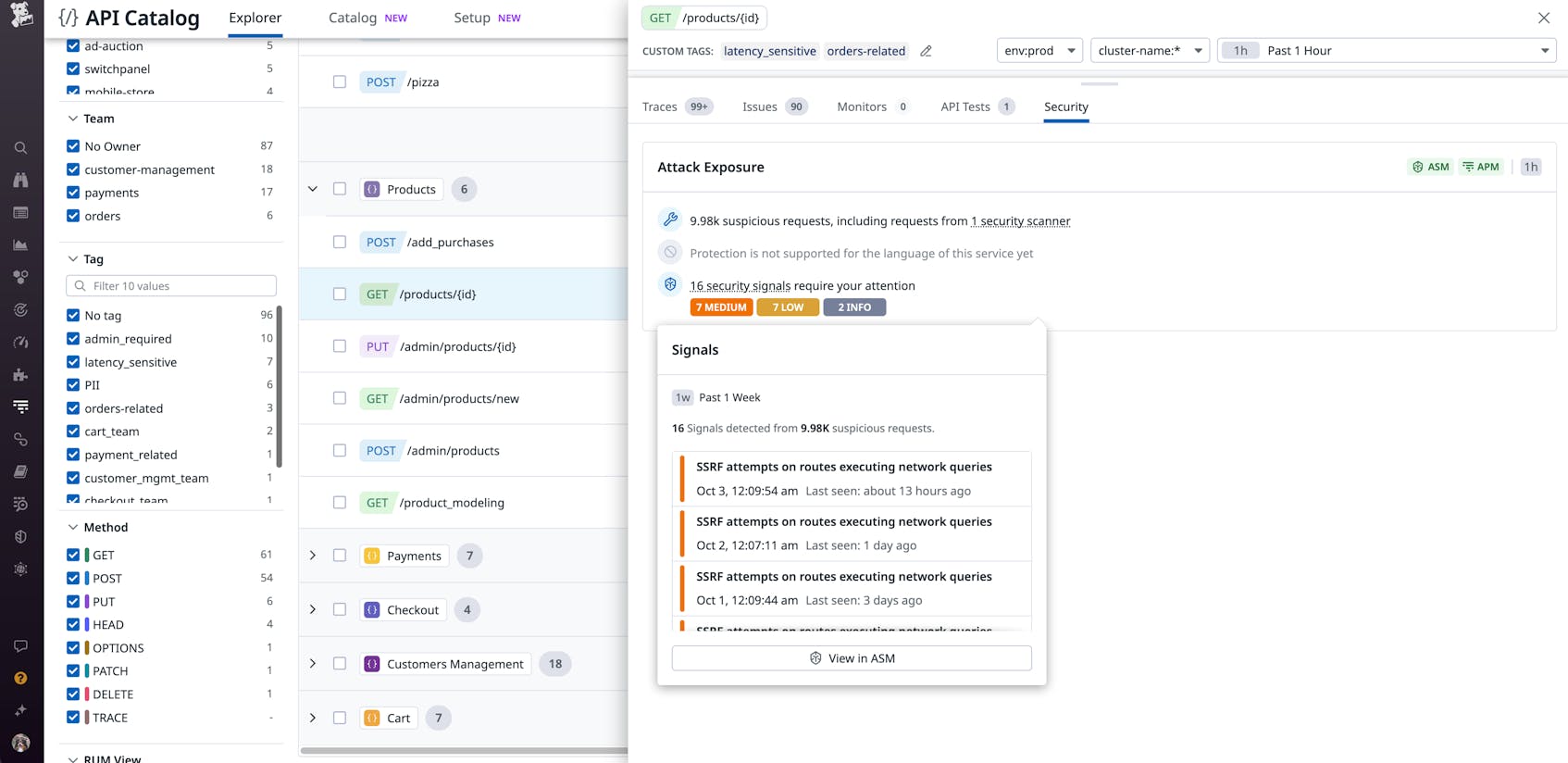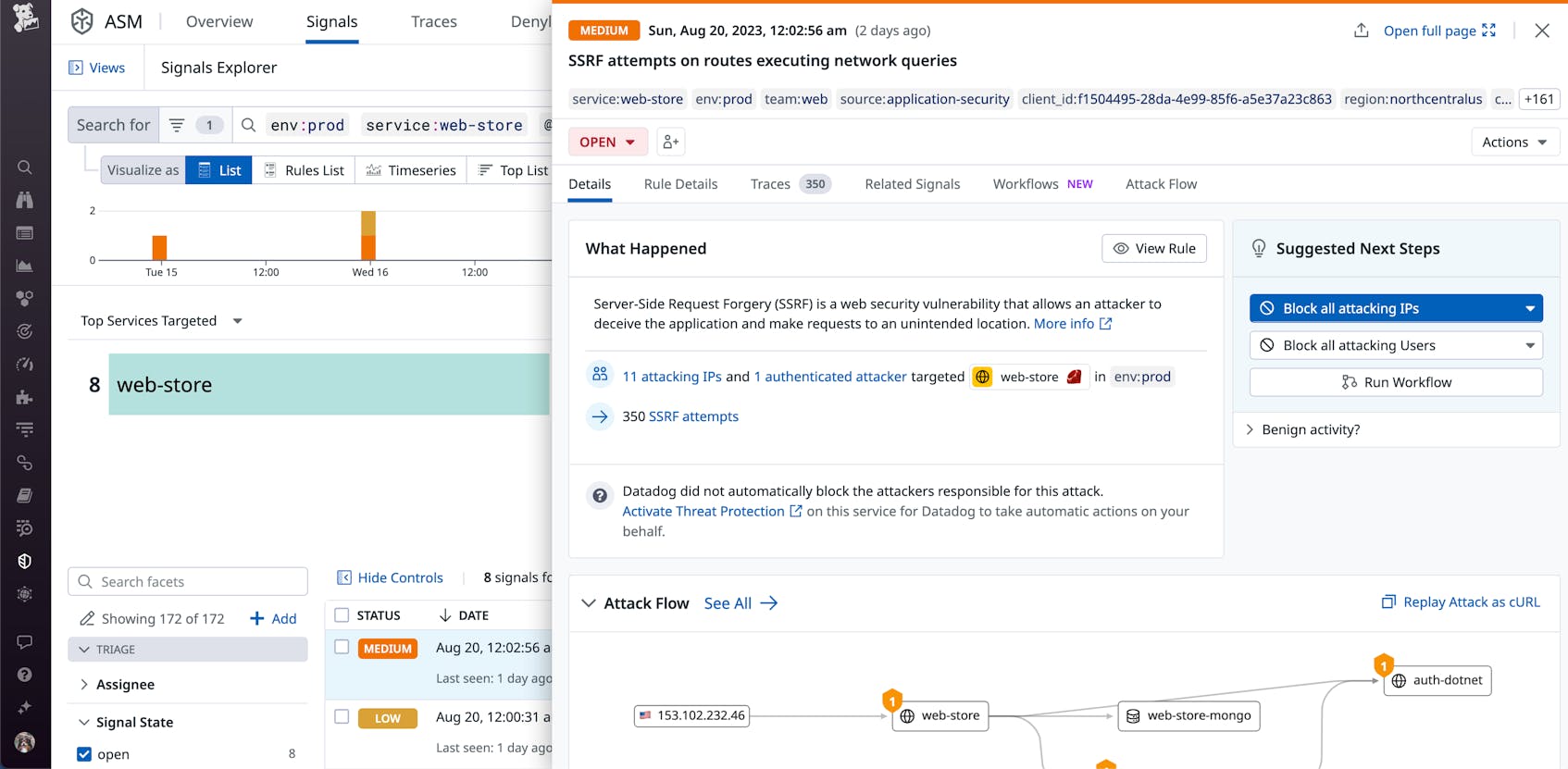Today’s modern applications are made up of thousands of loosely connected private and publicly exposed APIs, each serving a specific function. This dynamic API landscape, in combination with the decentralized nature of microservice development, can be overwhelmingly challenging to manage—let alone govern or secure adequately. API sprawl is often created as a result, leading to fragmented or nonexistent internal API documentation, knowledge bases, and toolsets. These environments can also introduce orphaned and zombie APIs, which make applications more vulnerable to an attack. Together, issues like these create an imbalance between developing new features and triaging performance and security issues, which ultimately leads to product instability.
To help solve these challenges, we’re excited to announce Datadog API Catalog, a unified, manageable inventory of all of your team’s APIs and their endpoints. The catalog leverages Datadog’s distributed tracing capabilities to automatically discover which endpoints are running in production, providing complete transparency into your API landscape. This visibility allows you to monitor endpoint performance and security, efficiently document and manage your APIs, and more. In this post, we’ll walk through how Datadog API Catalog’s unified view for all of your internal and public-facing APIs enables your teams to:
- Discover your API landscape
- Monitor API performance and enhance reliability
- Establish API ownership, governance, and effective security controls
Get complete context with Datadog’s API-centric visibility
Microservice architectures provide a decentralized approach to development, enabling your teams to independently manage their own services. While this approach offers teams greater flexibility in how they build applications, it creates the burdensome responsibility of managing API sprawl.
Datadog API Catalog provides the critical, real-time context you need for managing API sprawl via its API Explorer. Now you have a centralized location where you can:
- Visualize how each of your managed and unmanaged API endpoints are connected
- Find unmanaged, legacy, or shadow APIs in production that lack proper documentation
- Understand which API endpoints are seeing traffic across all services and environments
- Quickly see which endpoints, managed or unmanaged, are performing poorly or throwing errors
To build this consolidated view, Datadog API Catalog uses your OpenAPI specification files together with existing tracing telemetry and metadata to automatically discover and enrich APIs with performance data and relevant tags. Now you can easily search for and group endpoints based on a specific service, team, or business logic to get a meaningful, aggregated overview of your application structure. For example, you can view all API endpoints under a particular API grouping, running under a service, or owned by your team:
Endpoints without an owner or specified API can include those that are out of compliance with your governance policies or missing specification files. Not having a clear ownership model for your APIs significantly complicates triage efforts during incidents. With the API Explorer, you can quickly identify these types of endpoints in your environment, ensure they are adequately documented, and align them with your internal policies.
Improve API performance and reliability
Your API architecture is designed to support and interact with multiple application services and resources. When an endpoint’s performance degrades, you need to efficiently analyze all affected sources in order to resolve the issue before it affects end users. API performance issues, such as high latency or errors, can quickly lead to bottlenecks—or even outages—in applications.
Datadog API Catalog mitigates these types of scenarios by providing visibility into when business-critical API endpoints deviate from historical performance trends. This enables you to:
- Detect and efficiently investigate APIs that are underperforming
- Keep track of an API’s reliability via its triggered alerts, test results, and security signals
- Create alerts based on predefined key performance metrics like latency and error rate
- Standardize API testing and improve test coverage with Synthetic Monitoring
Having a single place to track API performance and reliability allows you to easily take action when an issue occurs. From the API Explorer, you can select a poorly performing API endpoint—such as one experiencing high latency—to view more details:
The catalog’s detail view provides you with all the information you need to investigate a performance issue. You can review the API endpoint’s owner and schema, key performance metrics over time, and a map of all of its service dependencies to determine how downstream services are affected. From this view, you can also pivot to other related data, such as code-level issues, monitors, and security signals, so you can easily find the root cause of your endpoint’s degraded performance:
Datadog API Catalog also integrates with Datadog Synthetic Monitoring to provide you with a comprehensive view of your API tests, as well as guidance on creating and improving test coverage.
Alert on API endpoints that deviate from expected performance
Datadog API Catalog is integrated with Datadog monitors, enabling you to create custom alerts based on your SLO goals. This ensures that you can quickly surface performance issues in business-critical API endpoints before they negatively affect customers. As seen in the following example, you can create new alerts and track their status all within the API Explorer:
You can also customize your alerts—such as by adding links to relevant SLOs, dashboards, and API tests—to ensure that they include enough context for resolving an issue.
Establish ownership and governance for your APIs
A major pain point in API management is tracking which teams are responsible for certain endpoints. This is especially true in monolithic or gateway architectures, where all workloads and associated API endpoints are deployed as a single service. In these cases, the service owner is often not the primary point of contact for any of the supporting endpoints. Without this information, operational and development teams often struggle to collaborate on sharing details about existing APIs, including which services they support, their performance expectations, and potential security threats. It also hinders a team’s ability to actively triage any API-related incidents, especially if API data is not connected to other telemetry data within an environment.
Datadog API Catalog solves these challenges by enabling you to:
- Integrate and manage API knowledge and ownership in one centralized place
- Break down monolith services into individual APIs
- Connect your API knowledge with usage and telemetry data captured by Datadog and observe live insights on how your APIs are deployed and being used
- Detect orphaned or zombie APIs, monitor suspicious API activity, and track your APIs’ security posture with Datadog Application Security Management (ASM)
Datadog API Catalog uses your OpenAPI specification files to connect telemetry data to existing API documentation and tools. If you don’t have OpenAPI specs, the API Explorer enables you to explore endpoints that are auto-discovered from application traffic and register them into APIs you own to get started. For example, you can assign an unmanaged endpoint to the appropriate API:
You can then access this information via the API page, which serves as a central repository for a particular API. Here you have a dynamic view of all of an API’s endpoints, tests, and monitors:
With this information, your teams have the real-time context they need to not only efficiently manage existing endpoints but also standardize the process for creating new ones. For example, your teams can automatically add new endpoints to the appropriate API and share relevant documentation about ownership, test coverage, and code. These governance controls significantly reduce the drift that often occurs in microservice architectures and ensures that all new endpoints are properly documented as soon as they spin up.
Improve the security posture of your APIs
Orphaned and zombie API endpoints are a common source of data breaches, making them a key focus for your security teams. But securing APIs is challenging without a deep understanding of an application’s business logic. For example, security teams often do not have visibility into all of an API’s accessible paths and methods, their authentication and authorization mechanisms, or when an endpoint processes sensitive data. On top of that, traditional security tools like web application firewalls (WAFs) are not always equipped to efficiently identify and stop an API-specific attack in real time.
Datadog API Catalog seamlessly integrates with Datadog ASM, allowing your security teams to assess your API ecosystem’s attack exposure. You can select an individual endpoint to review all suspicious activity that Datadog ASM detected, including details like the number of suspicious requests, how many of those requests were blocked, and any triggered security signals:
You can pivot directly to Datadog ASM from the API Explorer to get more details about the security threat and take appropriate action. For example, you can block any suspicious IPs targeting your API endpoint directly from Datadog ASM:
Check out our documentation for more information about Datadog ASM’s advanced API security capabilities. These address the common API risks seen in production environments, such as publicly exposed endpoints and sensitive data processing.
Efficiently manage your APIs and track their performance
Datadog API Catalog provides organizations with a centralized view of all of their APIs. With this visibility, teams can manage standardized, approved, and production-ready APIs within Datadog, monitor their performance and reliability, and quickly identify who owns certain endpoints for faster triage during incidents. These capabilities significantly shorten the communication overhead between the API owner and other stakeholders. If you don’t already have a Datadog account, you can sign up for a 14-day free trial to get started.
